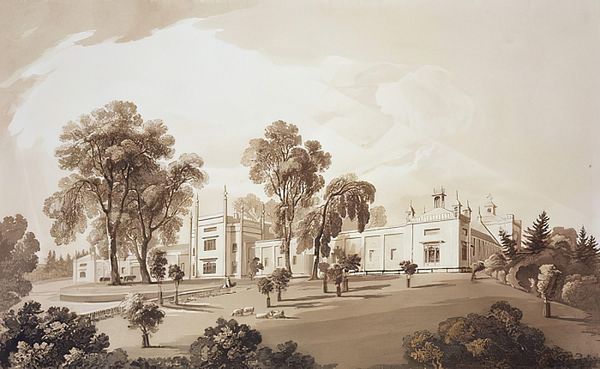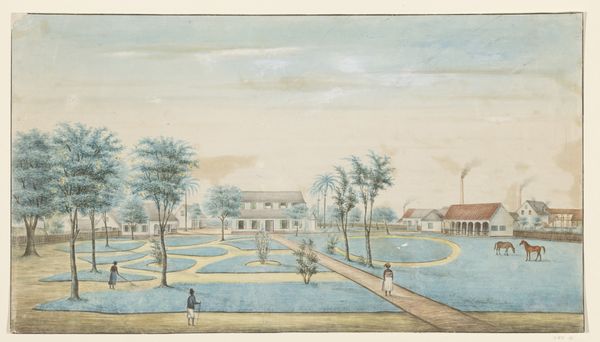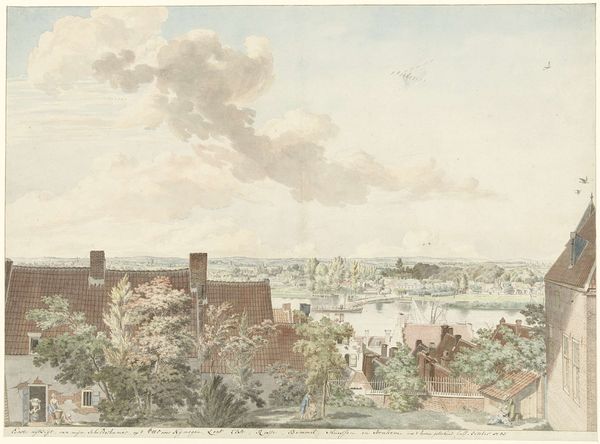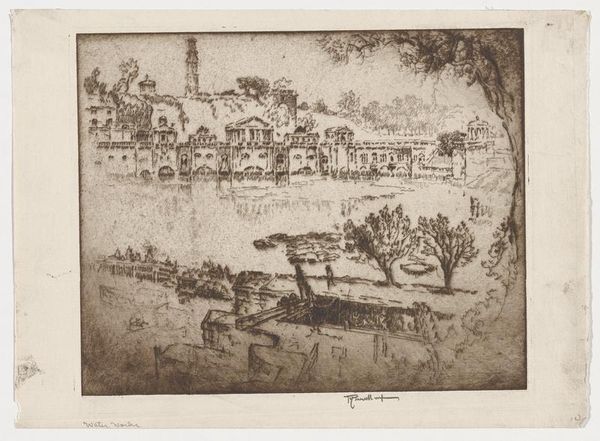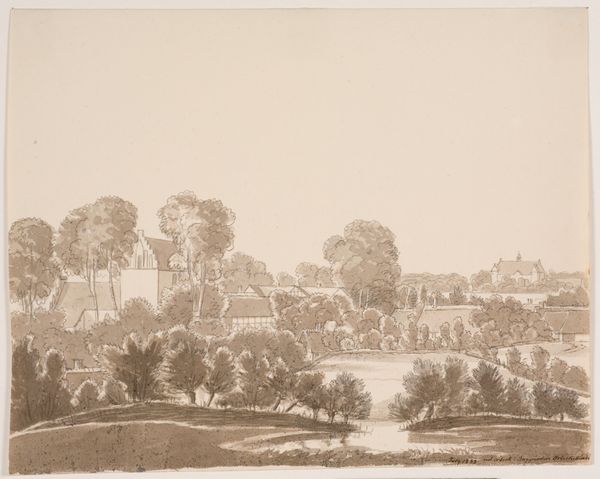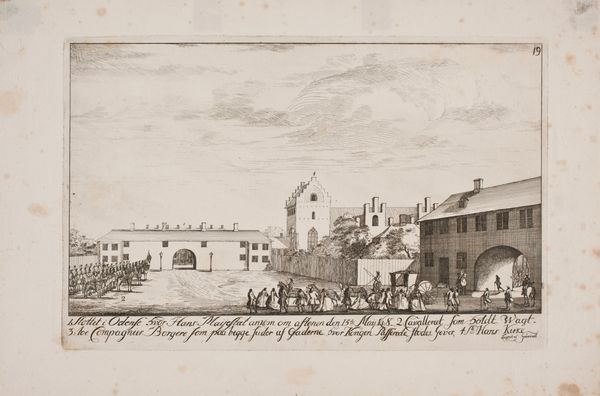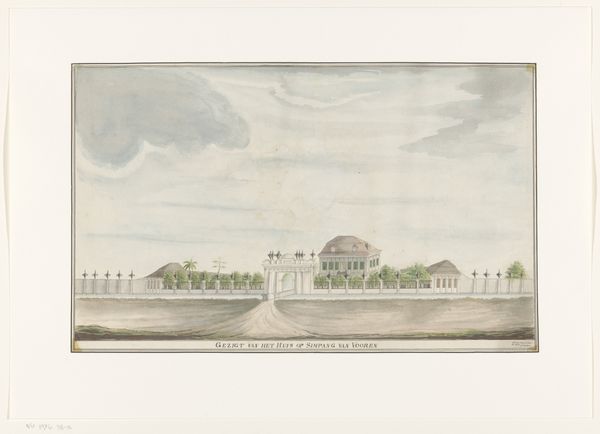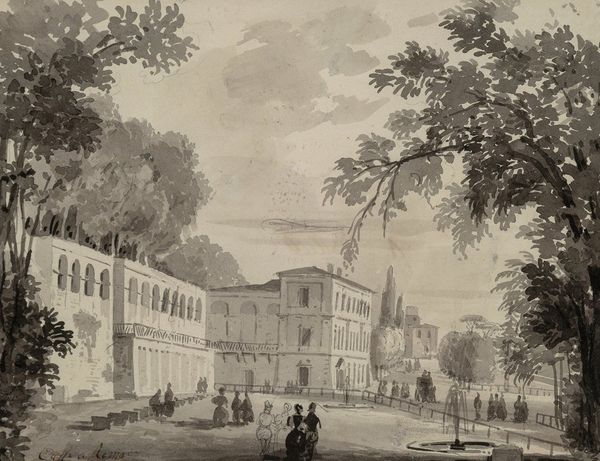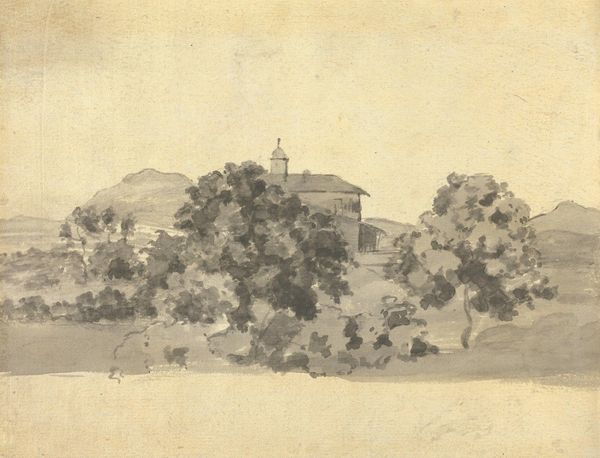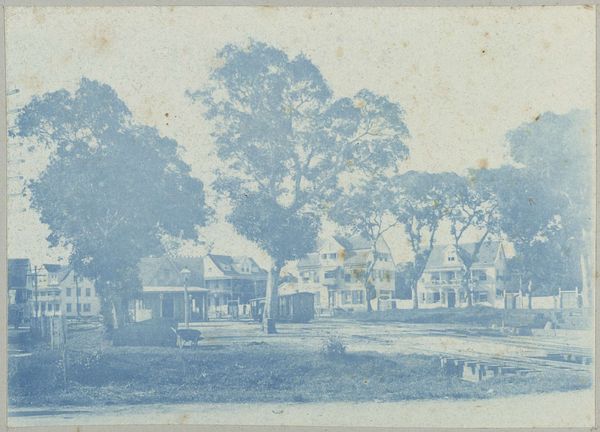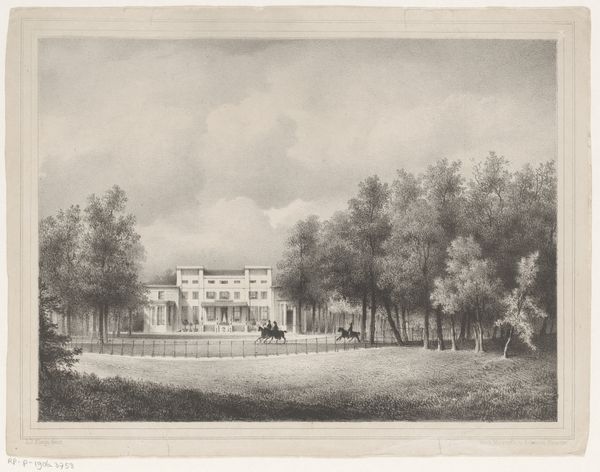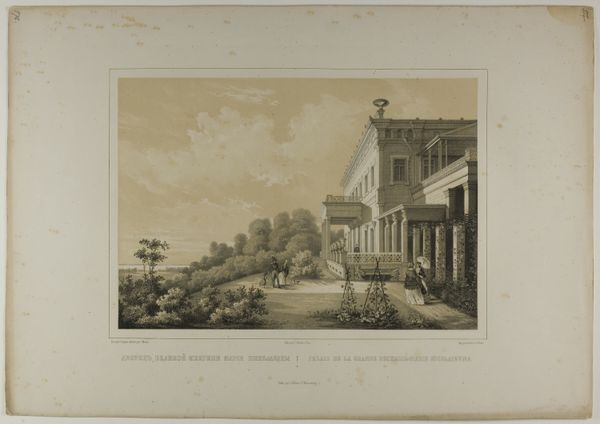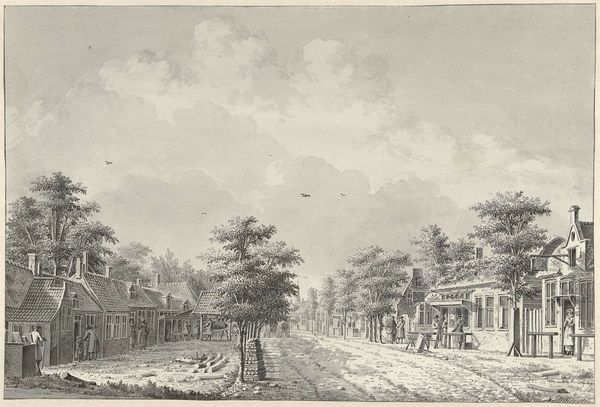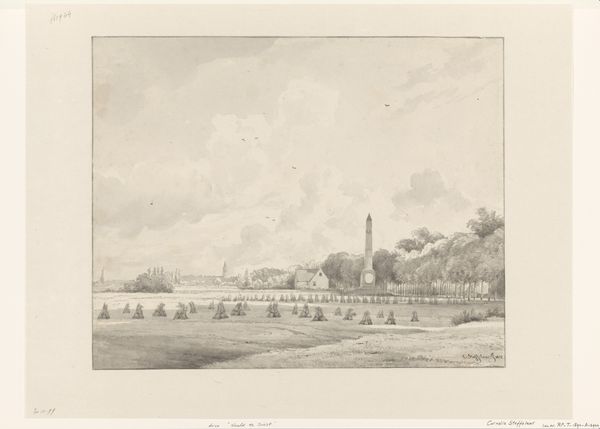
painting, watercolor
#
water colours
#
painting
#
watercolor
#
cityscape
#
genre-painting
#
miniature
#
realism
Dimensions: height 68.5 cm, width 99.5 cm, depth 33 cm
Copyright: Rijks Museum: Open Domain
Editor: Here we have Gerrit Schouten's "Diorama of Government Square in Paramaribo," created around 1812 using watercolors. I find it incredibly charming. The whole scene is constructed within this box, creating such a unique sense of depth and perspective. What stands out to you? Curator: The diorama is indeed captivating, and its construction invites a close analysis of its visual elements. I'm particularly struck by the interplay between the foreground and background. Note how the artist meticulously layers the composition. The detailed architecture of the government building provides a strong grounding in the immediate space, while the gradual recession into the hazy backdrop creates an illusion of vastness. Editor: It's interesting you focus on that. I hadn’t thought much about it beyond thinking the background helped make it feel like an open landscape. Curator: Precisely. And what do you observe about the artist's handling of light and shadow? Consider the effect it has on the overall atmosphere of the scene. Notice the variations in tone and how they contribute to the perceived solidity of the buildings and the textural qualities of the foliage. Editor: I guess I hadn’t looked beyond noticing that the building looks like it's painted with neutral colors. Now that you mention it, the shadows around the figures give them such life and form. So, by observing color tones we can understand the composition in a new way? Curator: Indeed. It's through such analysis that we uncover the formal strategies employed by the artist, which in turn informs our understanding of the artwork's expressive potential. By focusing on formal relationships, a diorama made with watercolors, paper, and wood becomes a complex exercise in representational form. Editor: I see. Paying closer attention to structure has deepened my appreciation. Curator: Mine too. Considering the formal language elevates the viewing experience.
Comments
rijksmuseum about 2 years ago
⋮
This is how Paramaribo’s Government Square (now Onafhankelijkheidsplein, or Independence Square) looked in the years when Suriname was under British rule, from 1804 to 1816. The British flag flies above Fort Zeelandia. Behind it, two British merchantmen sail on the Suriname River. On the left, the governor, Sir Pinson Bonham, in a red uniform, stands before the door of his residence. His wife is just coming out, holding their young daughter by the hand.
Join the conversation
Join millions of artists and users on Artera today and experience the ultimate creative platform.
